Learn about the best echinacea (purple coneflower) companion plants to help this lovely perennial thrive. Get a list of the best companion plants you can surround your echinacea with, including the best perennials to grow as companion plants for echinacea, the best annuals to plant around peonies, and the best herbs to plant with echinacea.
Get ideas about which plants to avoid planting near echinacea plants as well. You will also learn about the best time to plant echinacea, the best place to plant echinacea, the best fertilizer for echinacea, the watering needs of echinacea, and the best way to propagate echinacea to increase the number of your echinacea plants. You will also find a handy quick reference chart that lists all of the echinacea companion flowers and herbs in one place. Let‘s get started!
Table of Contents
What is Echinacea and How is It Used?
Echinacea, or coneflower, is a hardy, sun-loving perennial. It is a versatile plant with a variety of uses, ranging from ornamental to medicinal. Echinacea is a popular choice in flower gardens and landscaping due to its striking flowers and ability to attract pollinators like bees and butterflies. The blooms make excellent cut flowers, adding vibrant color to arrangements and bouquets.
The flowers can be used to create natural dyes, producing shades of pink or purple, which can be used for textiles and crafts. The blooms and leaves are edible, so may be used to decorate food for floral-themed parties. Echinacea can be used to make herbal teas or tinctures, which are consumed for their potential health benefits. Echinacea is a versatile, easy-to-grow addition to an herb, flower, or potager garden.
Echinacea Companion Plants Backstory
A few years ago I was given some echinacea seeds as a gift. I was so pleased to learn that echinacea is a perennial that will return every year, plus it was easy to grow in my USDA Zone 8 garden. Since that first success with growing echinacea, I have planted it in a variety of different places around the yard. It’s easy to move the plants or collect the seeds to increase the number of echinacea plants in your yard or garden. Read on to learn more about this amazing low-maintenance perennial.
Echinacea Companion Plants: Perfect for a Potager Garden
A potager garden is a French-style kitchen garden that combines the practical purpose of growing vegetables, herbs, and fruits with an aesthetic, ornamental design. Unlike traditional vegetable gardens, a potager garden focuses on beauty as well as functionality. Plants are arranged not only for visual effect but also to promote growth. Echinacea is ideal for a potager garden because of its attractive blooms as well as its many uses.
A potager is designed to look attractive in all seasons. This may include evergreen herbs, perennial flowers, or structures like arbors and trellises to provide visual interest even when crops aren’t in bloom. Here is my little potager garden. I have echinacea, chives, and rosemary planted together near our garden trellis and grape arbor. It’s definitely a work in progress!
Echinacea Companion Plants: Perennials
Companion perennials complement echinacea in terms of color, bloom time, height, and overall garden structure, creating a visually appealing and ecologically beneficial garden. Here are some of the best companion perennials for echinacea:
Black-Eyed Susan (Rudbeckia): Similar in height and bloom time, black-eyed Susan complements echinacea with its bright yellow flowers and daisy-like shape.
Shasta Daisy (Leucanthemum): Offers a classic, white-and-yellow flower that contrasts beautifully with the colorful coneflowers.
Russian Sage (Perovskia atriplicifolia): Tall and airy, with silvery-green foliage and purple-blue flowers, Russian sage pairs nicely with echinacea for a textured look.
Yarrow (Achillea): Flat-topped clusters of yellow, white, or pink flowers complement the upright blooms of echinacea and add variety in texture.
Blazing Star (Liatris): With tall, spiky purple or white flowers, liatris adds vertical interest alongside the bushy blooms of echinacea.
Coreopsis: These bright yellow flowers have a long bloom time and bring a splash of sunshine to your garden, enhancing the warm colors of echinacea.
Sedum (Stonecrop): The fleshy, drought-tolerant foliage of sedum pairs well with echinacea, and its late summer blooms extend garden interest into fall.
Gaillardia (Blanket Flower): The vibrant, daisy-like blooms in shades of red, orange, and yellow complement the bold colors of echinacea.
Salvia (Perennial Sage): The purple, pink, or blue flower spikes of salvia create a striking contrast to echinacea’s round blooms.
Bee Balm (Monarda): With its bold, spiky flowers in red, pink, or purple, bee balm not only complements echinacea visually but also attracts pollinators.
Phlox: Garden phlox produces clusters of brightly colored blooms that offer a striking contrast to echinacea’s bold flowers.
Helenium (Sneezeweed): With its late summer blooms in shades of red, orange, and yellow, helenium adds color to the garden during echinacea’s peak bloom time.
Verbena bonariensis: Tall, slender stems with clusters of purple flowers add an airy feel, balancing the solid blooms of echinacea.
Echinacea Companion Plants: Annuals
Echinacea pairs well with a variety of annuals that thrive in similar sunny, well-drained conditions. The annuals listed below provide a variety of color, texture, and form, enhancing the beauty of echinacea in your garden throughout the growing season. Plus, many of these options are pollinator-friendly, just like coneflowers. Here are some of the best companion annuals to plant alongside echinacea:
Zinnias: With vibrant colors and daisy-like flowers, zinnias add bold, cheerful blooms that complement the upright form of echinacea.
Marigolds: Marigolds provide a pop of yellow and orange, creating a warm, sunny palette when combined with echinacea’s pinks, purples, and whites.
Cosmos: Tall, airy cosmos flowers add a delicate texture to the garden and come in a variety of colors that work well with coneflowers.
Cleome (Spider Flower): Tall and spiky, cleome adds vertical interest and comes in shades of pink, purple, and white, which complement echinacea’s colors.
Petunias: Low-growing petunias come in a variety of colors and can provide a colorful ground cover or border around taller echinacea plants.
Sweet Alyssum: A small, fragrant annual that can be used as a ground cover around echinacea, sweet alyssum adds a delicate, airy look with its white or pastel flowers.
Lantana: Lantana is a heat-tolerant annual with clusters of small flowers in bright shades of pink, yellow, orange, and purple, providing a vibrant contrast to echinacea.
Snapdragons: Available in a wide range of colors, snapdragons offer vertical blooms that pair beautifully with the rounded flowers of echinacea.
Nasturtiums: These trailing or mounding plants with bright orange, red, and yellow blooms add bold color and are perfect for the front of a flower bed.
Portulaca (Moss Rose): Portulaca’s succulent-like foliage and bright, jewel-toned flowers thrive in hot, sunny conditions and can create a stunning low-growing border around echinacea.
Geraniums: Geraniums add bright splashes of red, pink, and white and offer contrast to echinacea’s larger blooms.
Dusty Miller: Dusty Miller’s silver-gray foliage adds a cool, soft contrast to the bold colors of echinacea, making it a great filler plant.
Echinacea Companion Plants: Herbs
Echinacea can pair beautifully with various herbs that thrive in similar growing conditions, such as full sun and well-drained soil. The herbs listed below not only enhance the aesthetic appeal of an echinacea garden with their textures, colors, and scents, but many of them also attract beneficial insects like pollinators, improving the overall health of your garden. Here are some of the best companion herbs for echinacea:
Lavender: Lavender thrives in full sun and well-drained soil, just like echinacea. Its fragrant purple flowers and silvery foliage provide a lovely contrast.
Thyme: This low-growing herb can act as a ground cover around echinacea, filling in gaps with its fragrant, green foliage and tiny flowers.
Sage: Sage’s gray-green leaves and purple or blue flowers pair well with the bright blooms of echinacea, offering a bold contrast.
Oregano: Oregano spreads easily and thrives in similar conditions as echinacea, making it a great companion that also attracts pollinators.
Rosemary: With its upright growth and aromatic foliage, rosemary adds height and texture, complementing echinacea’s large blooms.
Chamomile: The dainty, white flowers of chamomile add softness and visual interest, contrasting with echinacea’s larger blooms while creating a soothing, herbal garden.
Basil: While basil prefers full sun and well-drained soil like echinacea, its green or purple foliage can add variety to the garden, and it also helps repel pests.
Lemon Balm: This fast-growing herb is great for filling space near echinacea. Its light green leaves and lemony scent add both fragrance and texture. Keep in a container if you would like to control the spread. To me, the fragrance makes it worth a little extra trouble.
Catmint (Nepeta): With its soft lavender-blue flowers and aromatic leaves, catmint complements echinacea, providing color contrast and attracting pollinators.
Hyssop: Hyssop produces spikes of purple or blue flowers and has a similar height to echinacea, making it a perfect companion plant that attracts bees and butterflies.
What Not to Plant with Echinacea
While echinacea pairs well with many plants, there are some plants you should avoid planting near it due to competing needs or potential negative interactions. Here are some plants not to plant with echinacea:
Plants that Require Excess Moisture: Astilbe prefers consistently moist soil, which can lead to root rot for echinacea. Japanese Iris thrives in wet conditions, creating competition for moisture.
Tall Plants that Shade Echinacea: Sunflowers attract pollinators, but their height can shade echinacea, limiting its sunlight exposure. Tall perennials like hollyhocks can overshadow echinacea and hinder its growth.
Plants Prone to Fungal Diseases: Peonies can harbor fungal diseases that might spread to echinacea, especially in humid conditions. Hostas can also be susceptible to similar diseases, which may affect nearby echinacea.
Aggressive Growers: Mint is known for its invasive nature, and can quickly overtake garden space and compete for nutrients and water. Vinca (Periwinkle) is another aggressive plant that can spread rapidly and outcompete echinacea.
Plants with Similar Nutrient Needs: Plants in the Cabbage Family (Brassicas) may compete for the same nutrients, potentially affecting echinacea’s growth.
Plants that Attract Pests: Certain types of vegetables, such as tomatoes and peppers, may attract pests that could harm echinacea.
Plants with Different Light Requirements: Shade-loving plants like ferns or hostas that thrive in shaded areas can compete for resources and do not share the sunny conditions echinacea prefers.
Echinacea Companion Planting Chart
| Best Echinacea Companion Plants | |
| Echinacea Companion Plants: Flowers | Echinacea Companion Plants: Herbs |
| Perennials | Basil |
| Bee Balm (Monarda) | Catmint (Nepeta) |
| Black-Eyed Susan (Rudbeckia) | Chamomile |
| Blazing Star (Liatris) | Hyssop |
| Coreopsis | Lavender |
| Gaillardia (Blanket Flower) | Lemon Balm |
| Helenium (Sneezeweed) | Oregano |
| Phlox | Rosemary |
| Russian Sage (Perovskia atriplicifolia) | Sage |
| Salvia (Perennial Sage) | Thyme |
| Sedum (Stonecrop) | |
| Shasta Daisy (Leucanthemum) | Worst Echinacea Companion Plants |
| Verbena bonariensis | Astilbe |
| Yarrow (Achillea) | Broccoli |
| Cabbage | |
| Annuals | Cauliflower |
| Cleome (Spider Flower) | Ferns |
| Cosmos | Hollyhocks |
| Dusty Miller | Hosta |
| Geraniums | Japanese iris |
| Lantana | Mint |
| Marigolds | Peonies |
| Nasturtiums | Peppers |
| Petunias | Sunflowers |
| Portulaca (Moss Rose) | Tomatoes |
| Snapdragons | Vinca |
| Sweet Alyssum | |
| Zinnias | |
Echinacea Planting and Growing Tips
When is the best time to plant echinacea?
The best time to plant echinacea (coneflower) is in spring or early fall.
Spring Planting: Plant echinacea after the last frost date in your area, typically between late April and early June. This allows the plants to establish their roots during the warmer growing season. Spring planting takes advantage of the longer days and warmer temperatures, promoting faster growth and robust flowering.
Fall Planting: In early to mid-fall (September to October), plant echinacea a few weeks before the first expected frost. This gives the plants time to establish roots before winter. Fall planting allows echinacea to benefit from the cooler temperatures and natural rainfall, reducing the need for watering. It also means the plants will be ready to bloom earlier in the spring. Echinacea plants drop their seeds and can naturally reseed in the fall.
Where is the best place to plant echinacea?
The best location to plant echinacea is in a sunny spot that receives full sun, ideally at least 6 to 8 hours of direct sunlight each day. Echinacea thrives in well-draining soil with a pH between 6.0 and 7.0. You can monitor soil pH level with a handy meter like this one.
Echinacea plants prefer a slightly dry environment, so avoid low-lying areas where water may accumulate. Incorporating organic matter can improve soil quality and drainage. Planting echinacea in these conditions will promote healthy growth, vibrant blooms, and attract beneficial pollinators to your garden.
How much water does echinacea need?
Echinacea (coneflower) requires moderate watering, particularly during its establishment period. Here are some key guidelines for watering echinacea:
Newly planted echinacea should be watered regularly—about 1 inch (2.5 cm) of water per week, either from rainfall or supplemental watering, to help establish strong roots.
Once established, echinacea is relatively drought-tolerant and typically needs water only during prolonged dry spells. Watering should be reduced to about 1 inch (2.5 cm) every 1-2 weeks depending on weather conditions.
Always check the soil moisture before watering; the top 1-2 inches (2.5-5 cm) of soil should be allowed to dry out between waterings. Overwatering can lead to root rot, so ensure the soil drains well.
During periods of consistent rain (like what we often have here in Oregon), additional watering may not be necessary.
What is the best fertilizer for echinacea?
The best fertilizer for echinacea is a balanced, slow-release fertilizer with an N-P-K ratio of 10-10-10 or 5-10-10. This ensures that the plants receive an equal supply of nitrogen, phosphorus, and potassium, promoting healthy growth, strong root development, and abundant flowering. It’s advisable to apply the fertilizer in early spring when new growth begins and again in mid-summer to support blooming. Additionally, incorporating organic compost or well-rotted manure into the soil can enhance nutrient availability and improve soil structure without overwhelming the plants.
How to Make Echinacea Tea
Ingredients
1-2 tablespoons chopped fresh echinacea leaves and flowers
1 cup of water
Optional Additions: Honey, lemon, or other herbs (such as ginger or peppermint) for flavor
Instructions
Bring water to a boil in a saucepan or kettle.
Once the water is boiling, remove it from heat.
Add the measured echinacea to the hot water.
Cover and let it steep for about 10-15 minutes for the best flavor and health benefits.
After steeping, strain the tea through a fine mesh strainer or cheesecloth to remove the plant material.
Optional: You can enhance the flavor of your echinacea tea with a drizzle of honey, a squeeze of lemon, or other herbs and spices like ginger or peppermint.
It’s generally safe to drink echinacea tea 2-3 times a day, but consult with a healthcare provider for specific recommendations, especially if you have health conditions or are pregnant.
Propagating Echinacea
The best way to propagate echinacea is through seed stratification and planting. Collect seeds in fall, then cold stratify them by placing them in moist sand in the fridge for 4-6 weeks to improve germination. Sow seeds in spring or late fall in well-draining soil, and keep the soil lightly moist. Alternatively, division in early spring or fall is a faster method; simply dig up the plant, divide the root ball into sections, and replant. Both methods are reliable, though seed propagation takes longer for plants to mature. Here are some of my echinacea plants going to seed. The seeds of echinacea are very easy to save.
Need More Planting Ideas?
Check out the tips for the best companion plants for eggplant to learn what to grow with those beauties. If you like the idea of companion planting, you might be interested in reading about the best companion plants for pumpkins, irises, sunflowers, garlic, asparagus, rosemary, radishes, beetroot (beets), thyme, parsley, lupine, borage, stevia, kale, lemon balm, or the best companion plants for lavender. Get tips for growing stunning dahlias or vintage roses. Are you a beginning gardener? Try planting some foolproof, easy-care perennials, or learning about the best companion plants for columbine. There are so many exciting plants to grow!
Keep Track of Your Garden with a Journal Logbook
Now that you have learned about some compatible companion plants, keep track of your planting ideas, goals, and plans with a printable, editable free garden journal logbook. Choose the pages you want to use and customize them as you wish to record monthly, weekly, and daily garden tasks, lists, weather, and planting arrangements. There are also grid pages for easily designing the layout of your vegetable garden, flower garden, or landscape. Print it out and put it into a notebook you can take with you to the garden (that’s what I do). It’s nice to have all of your garden information in one place.
Get the garden journal logbook!
Free Online Garden Planner Layout Template
Now that you know which are the best companion plants for echinacea, you might need a way to plan your garden layout. Whether you are planting vegetables, flowers, or herbs near your lupine plants, this online garden planner can help you visualize your design and bring it to life. Arrange and rearrange the plants over and over, then print the layout when you are satisfied. With garden tasks that need your attention, this is one way to save time.
It’s fully customizable when you make your own copy and includes two editable chart pages for noting planting specifications.
Get my free online garden layout planner template!
Have a wonderful week, and may all of your echinacea-growing endeavors meet with success!

Lisa Mitchell is a wife, mom, and school librarian who likes to grow fruit, herbs, vegetables, and flowers on her family’s small Pacific Northwest farm. To learn more about what this website has to offer gardeners, click on over to the Garden page.


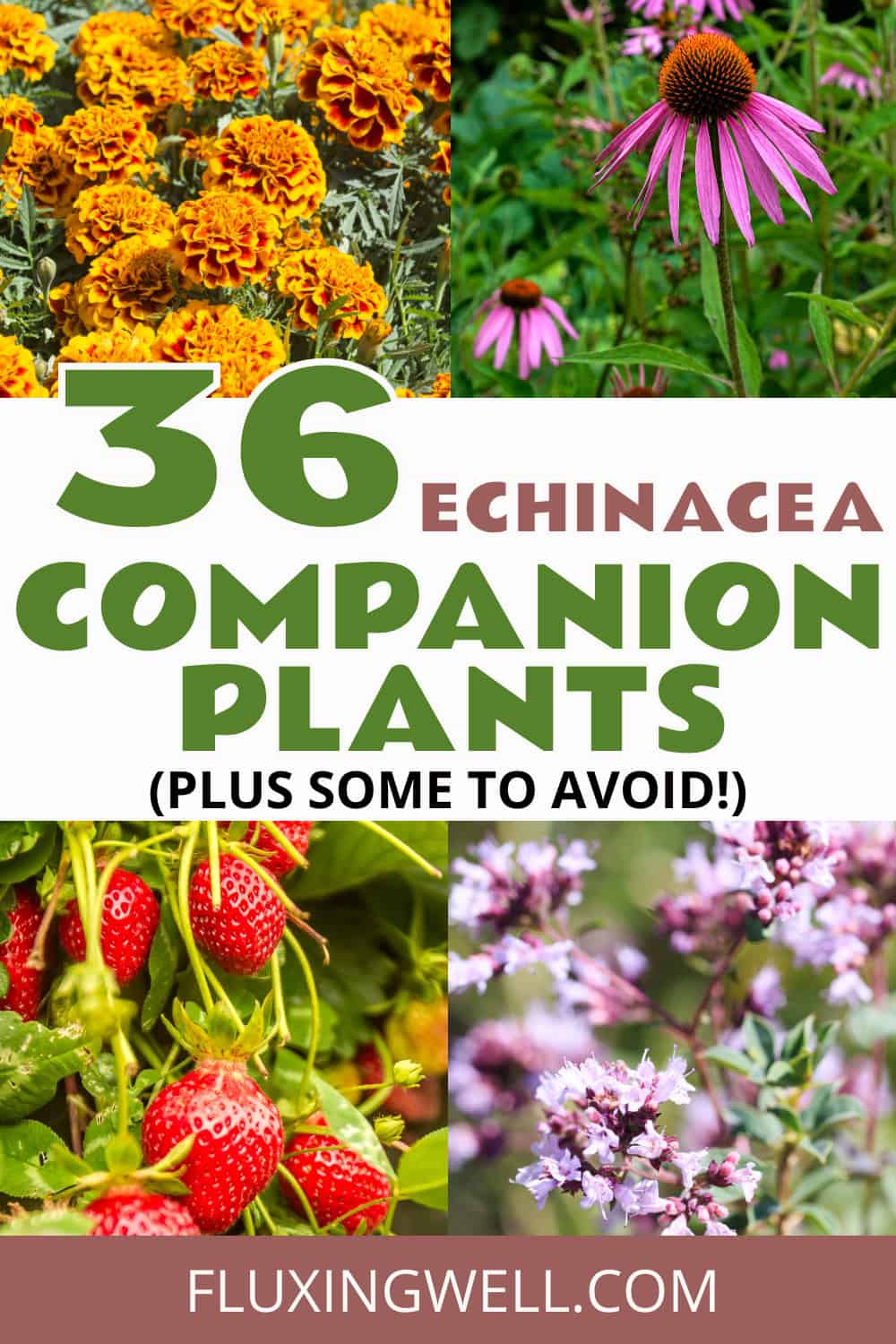
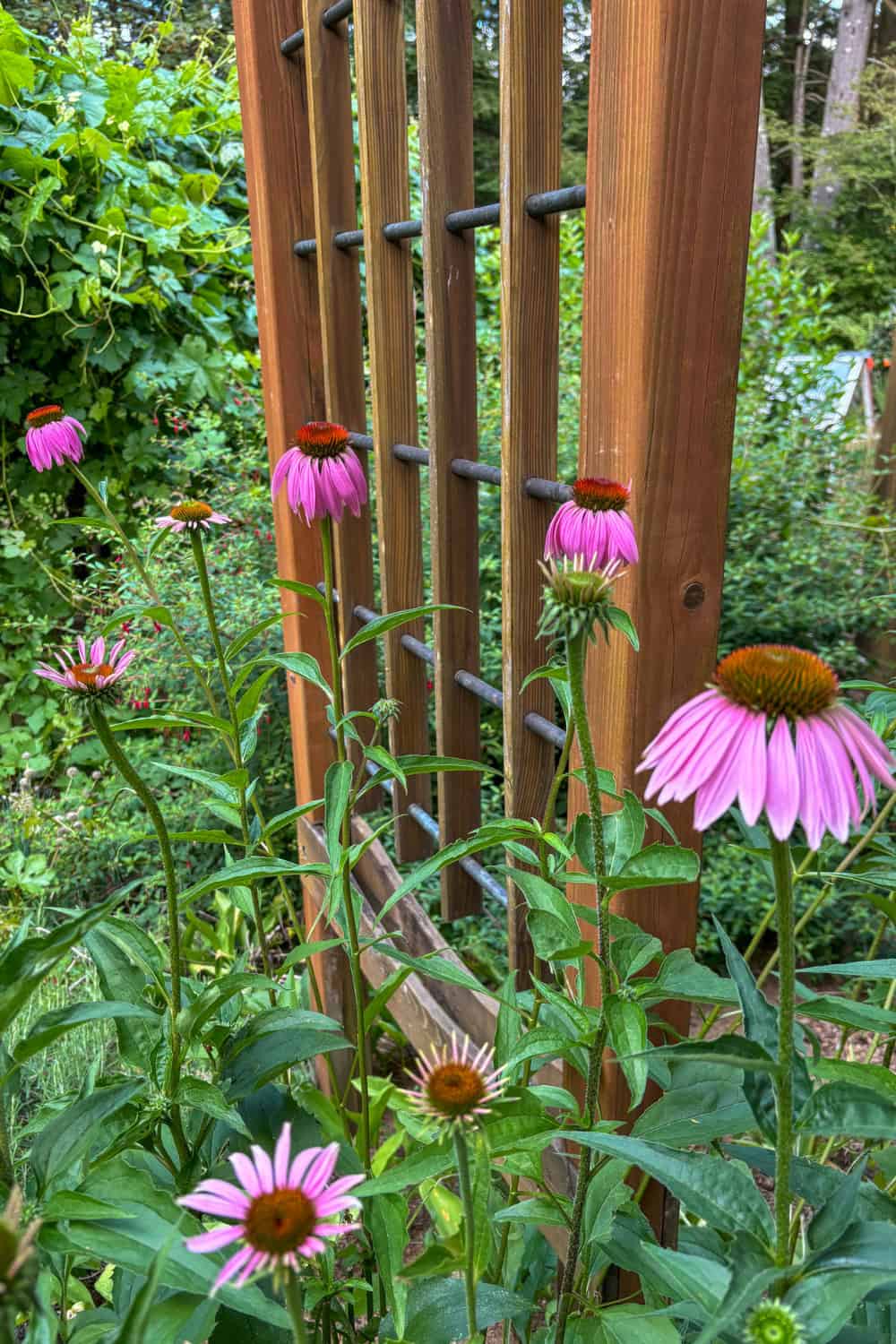

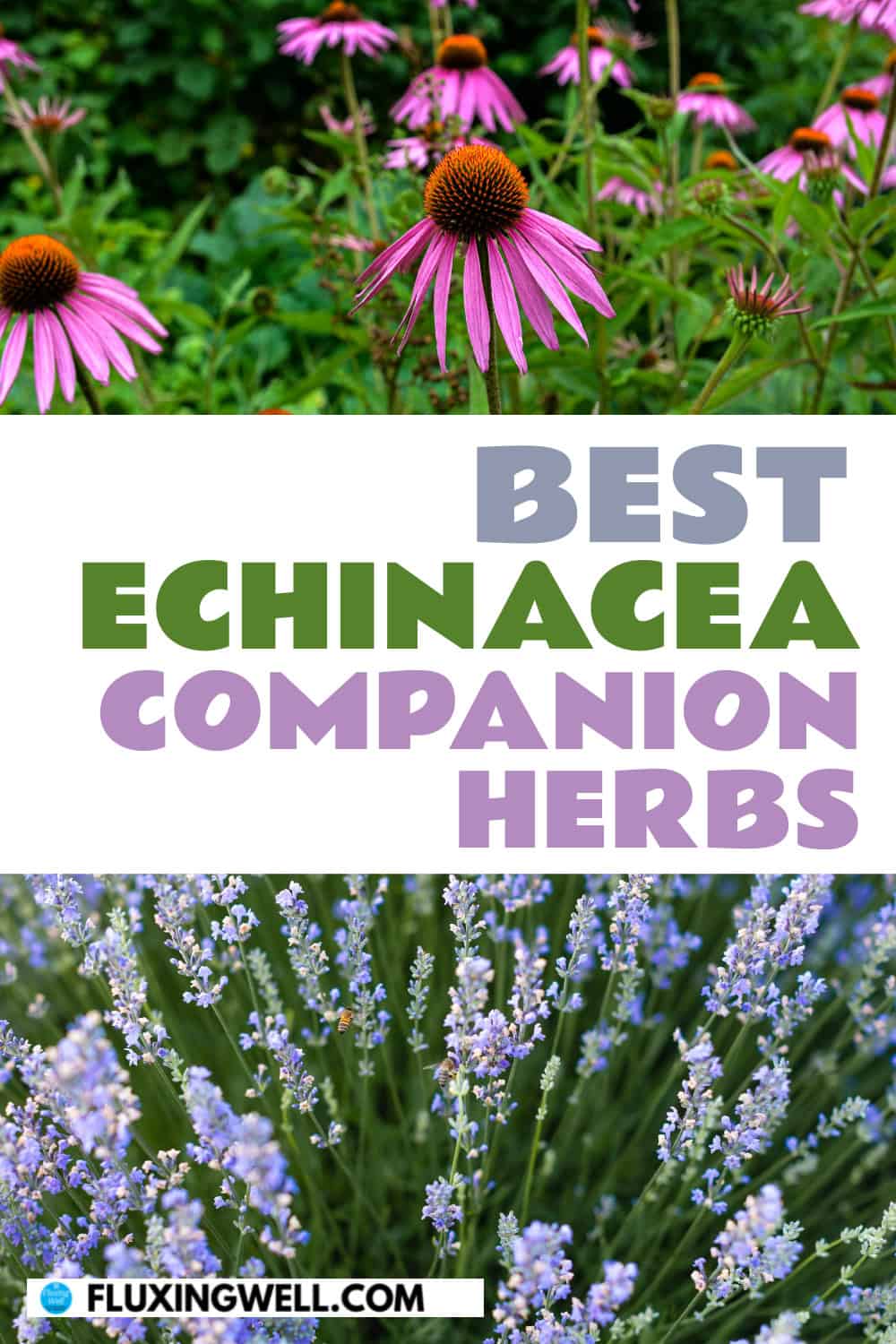


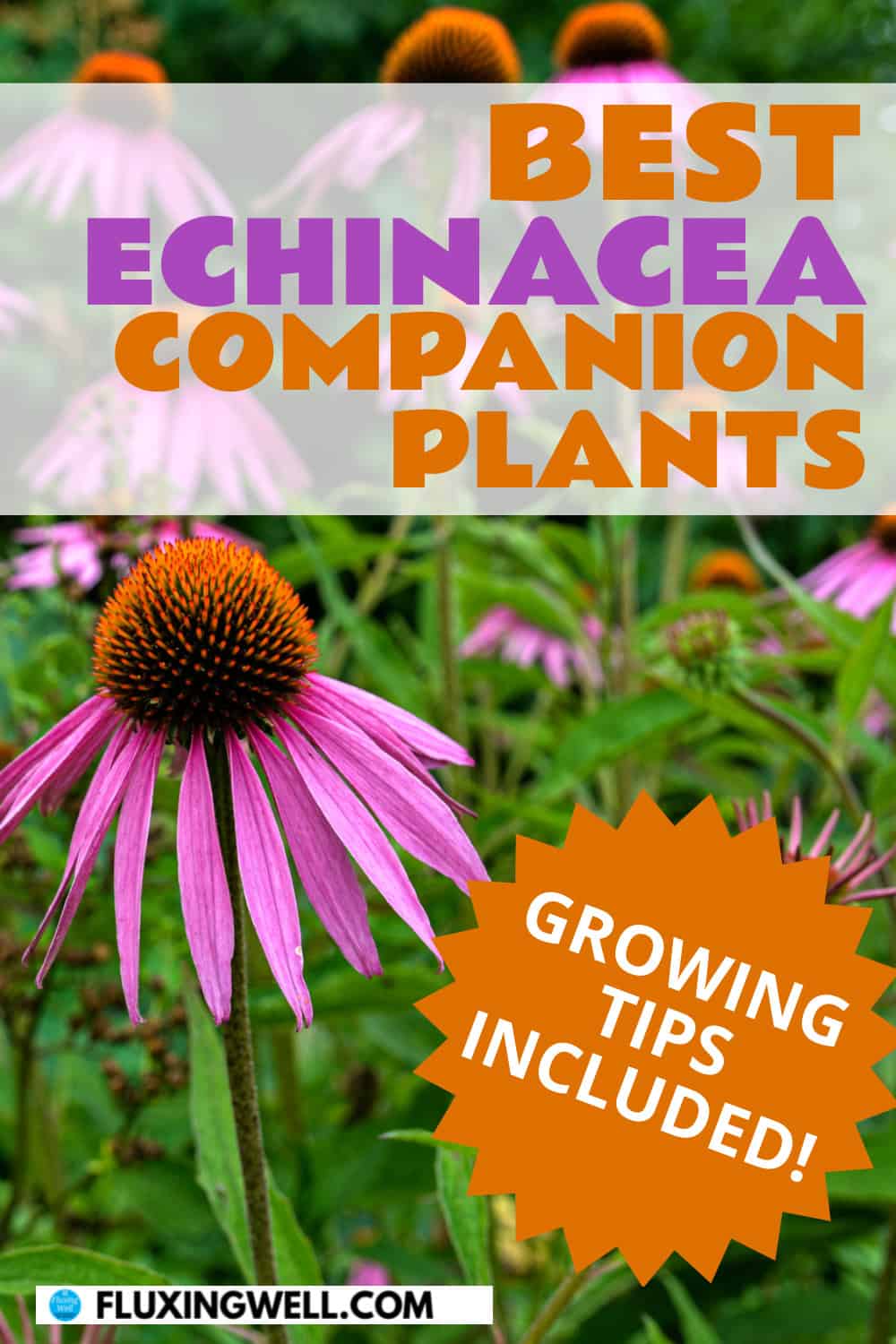
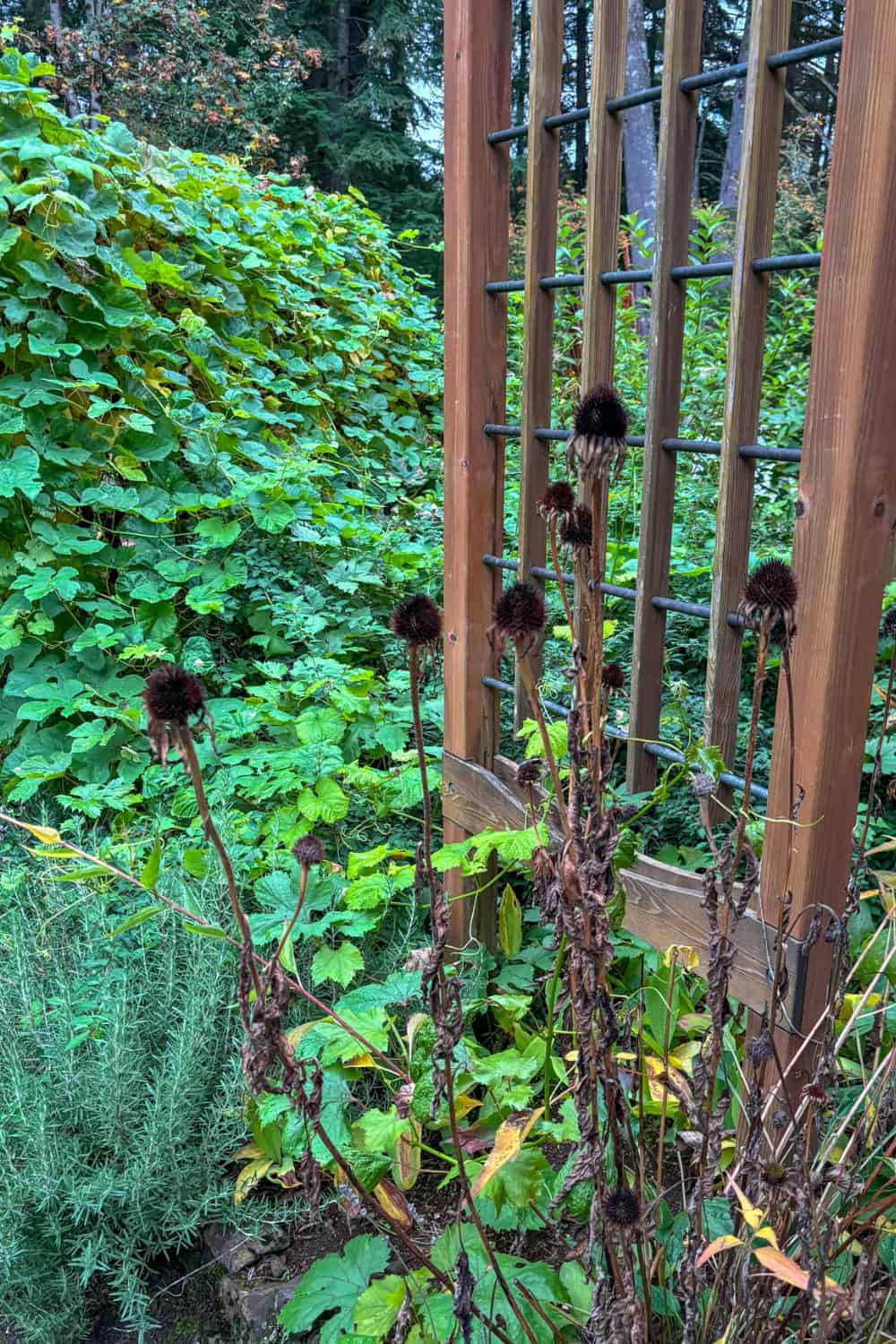


Since the place where I live has sunshine all year round, I guess Echinacea will be a perfect one to plant in our garden. Thanks a lot for listing all the other companion plants! So helpful.
Nice! I wish you great success in growing echinacea in your garden.
This is a wonderful guide on the 36 echinacea companion plants as well as some to avoid. That’s wonderful you were given some echinacea seeds as a gift and that it is a perennial that will return every year. It’s a huge benefit that it attracts bees and butterflies as well. Thank you for the great echinacea tea recipe, too!
You are most welcome. Echinacea is now one of my favorite easy-care plants. Happy gardening!
Thanks so much for the great information about echinacea companion plants. I especially love that you included instructions for brewing tea. So helpful!
You’re welcome! The initial echinacea seeds I was given were part of a tea garden collection, which was a ver fun gift.